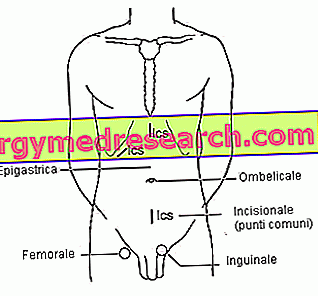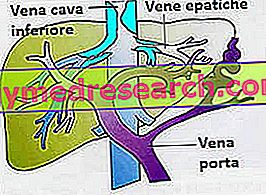By Marco Romano
Introduction and incidence
Stroke is the third leading cause of death in Europe, after heart disease and cancer, and the leading cause of disability in adults, with an estimated 1 million and 400 thousand deaths a year. A heavy burden on society and health care costs, since this pathology accounts for about 3-4% of total health costs.

Today our lifestyles include a series of behaviors and habits that are harmful to our body's health. Smoking, alcohol and drugs are among the most "ancient" harmful habits, while in the last 50 years the advent of new technologies applied to work, transport, leisure and leisure have led man to always move less. Poor motor activity involves all age groups. Young people prefer to spend time at home in front of the TV or computer rather than playing classic playground games (running, jumping, ball games, etc.) or engaging in sports activities. Adults, often forced by the frenetic rhythms of today's society, use exclusively means of transport to move around, perform sedentary jobs and have less and less free time to engage in a physical or sporting activity. Finally, the elderly face difficulties and environmental, economic and psychophysical social problems that distance them from a physically active life. Today, poor motor activity is considered one of the most important risk factors for chronic diseases such as diabetes, osteoporosis, obesity, neoplasms and depression, and for cardio-cerebrovascular diseases, obviously among these pathologies there is also stroke.
The World Health Organization and the World Heart Federation have urged all governments and scientific societies to promote, through the mass media, various dissemination initiatives aimed at spreading the principle that motor activity and a healthy lifestyle help prevent these diseases.
In the next chapters we will explain what are the causes and risk factors of stroke and the role that physical activity has in preventing the disease.
Definition of stroke
It is called stroke, from the Latin blow, cerebral infarction.
According to the WHO definition, stroke is the sudden appearance of signs and / or symptoms referable to focal and / or global (coma) brain function defects, lasting more than 24 hours or fatal, not attributable to other apparent cause if not cerebral vasculopathy.
This disease is caused by the non-arrival of blood in an area of the brain, very similar to what happens to the heart during myocardial infarction
Importance of motor prevention
Physical activity plays an important role in the prevention of various cardiovascular diseases and also has a protective effect against stroke. The protective effect of physical exercise against stroke is reasonably deducible based on the link between physical activity and risk factors for stroke. Physical activity works by eliminating and reducing these factors that increase the likelihood of being affected by the disease. Most studies show a protective effect of physical activity, such as to reduce the overall risk of the disease by over 35% compared to those activities considered sedentary; it must be emphasized that when we talk about physical activity we refer not only to sports activities in the strict sense, but also to all those activities that are carried out in daily life and that involve the use of the body, such as going up and down stairs, using the bicycle as a means of locomotion, walking, doing housework.
Two types of motor activity to combat stroke:
- "Protective" motor activity to prevent the occurrence of causes and risk factors of stroke (Aimed at subjects in good health)
- "Therapeutic" motor activity for the improvement of pathological conditions identified as stroke risk factors. (Addressed to those subjects that present one or more pathologies identified as stroke risk factors)



